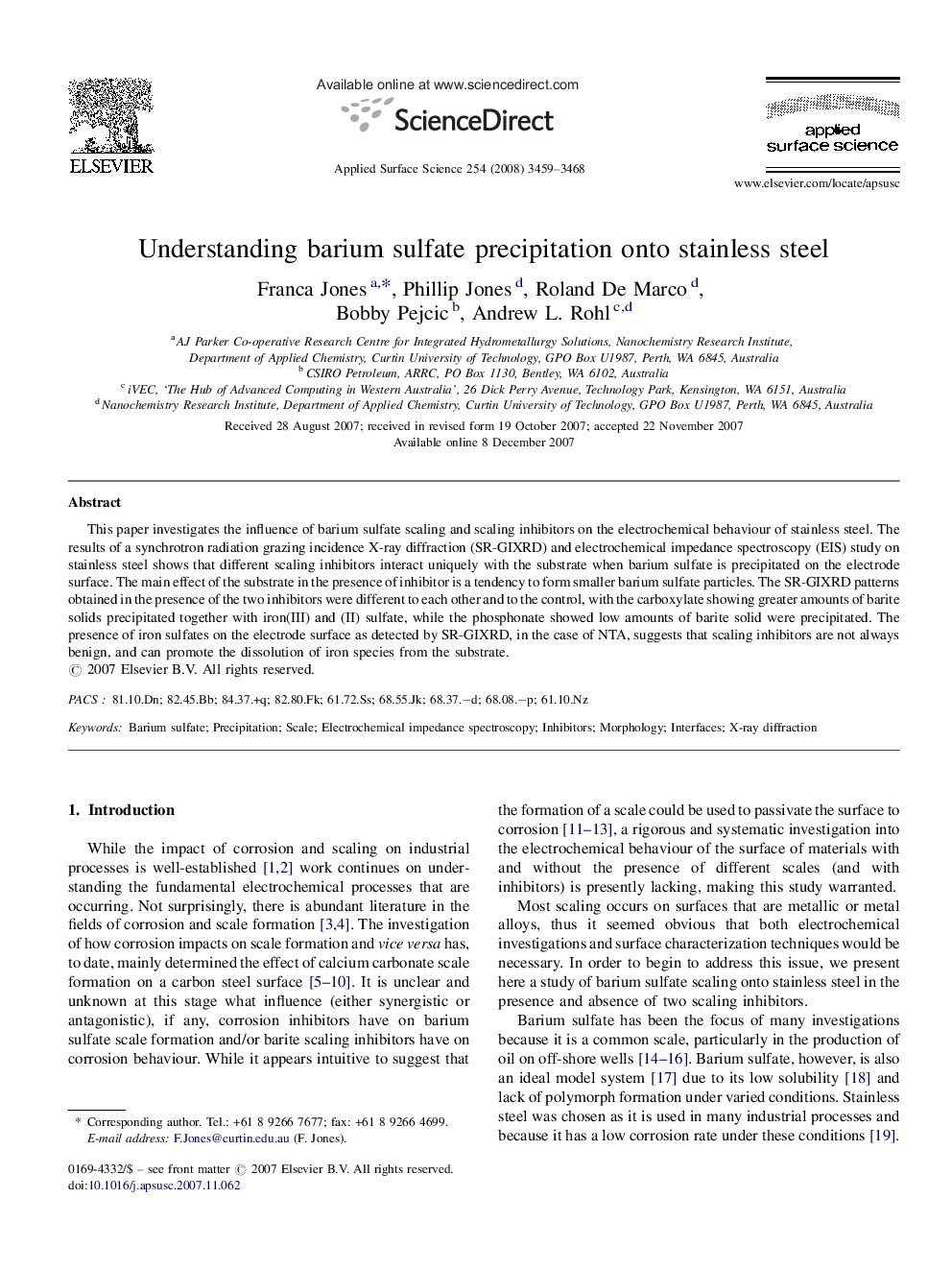| Article ID | Journal | Published Year | Pages | File Type |
|---|---|---|---|---|
| 5364956 | Applied Surface Science | 2008 | 10 Pages |
Abstract
This paper investigates the influence of barium sulfate scaling and scaling inhibitors on the electrochemical behaviour of stainless steel. The results of a synchrotron radiation grazing incidence X-ray diffraction (SR-GIXRD) and electrochemical impedance spectroscopy (EIS) study on stainless steel shows that different scaling inhibitors interact uniquely with the substrate when barium sulfate is precipitated on the electrode surface. The main effect of the substrate in the presence of inhibitor is a tendency to form smaller barium sulfate particles. The SR-GIXRD patterns obtained in the presence of the two inhibitors were different to each other and to the control, with the carboxylate showing greater amounts of barite solids precipitated together with iron(III) and (II) sulfate, while the phosphonate showed low amounts of barite solid were precipitated. The presence of iron sulfates on the electrode surface as detected by SR-GIXRD, in the case of NTA, suggests that scaling inhibitors are not always benign, and can promote the dissolution of iron species from the substrate.
Keywords
Related Topics
Physical Sciences and Engineering
Chemistry
Physical and Theoretical Chemistry
Authors
Franca Jones, Phillip Jones, Roland De Marco, Bobby Pejcic, Andrew L. Rohl,
